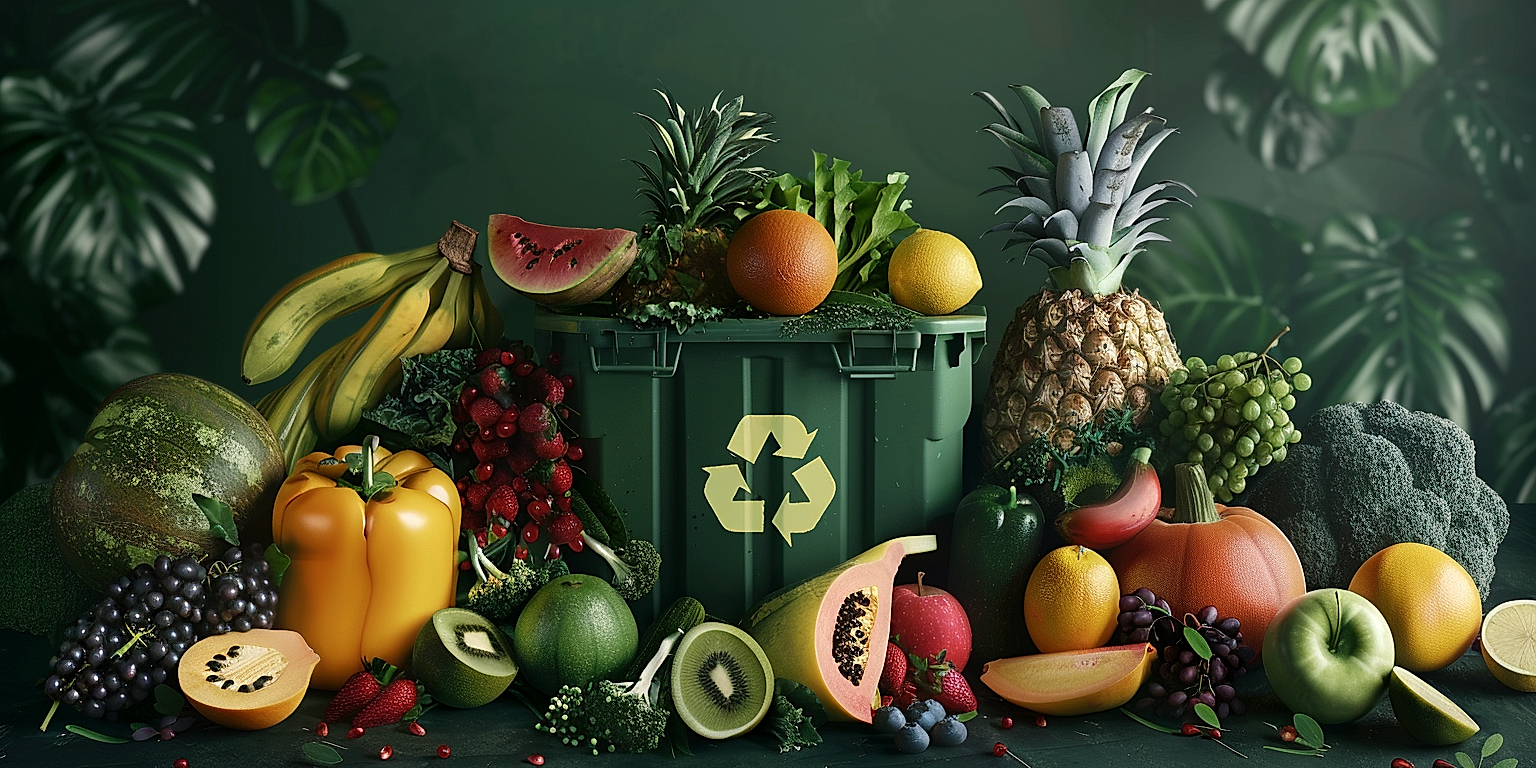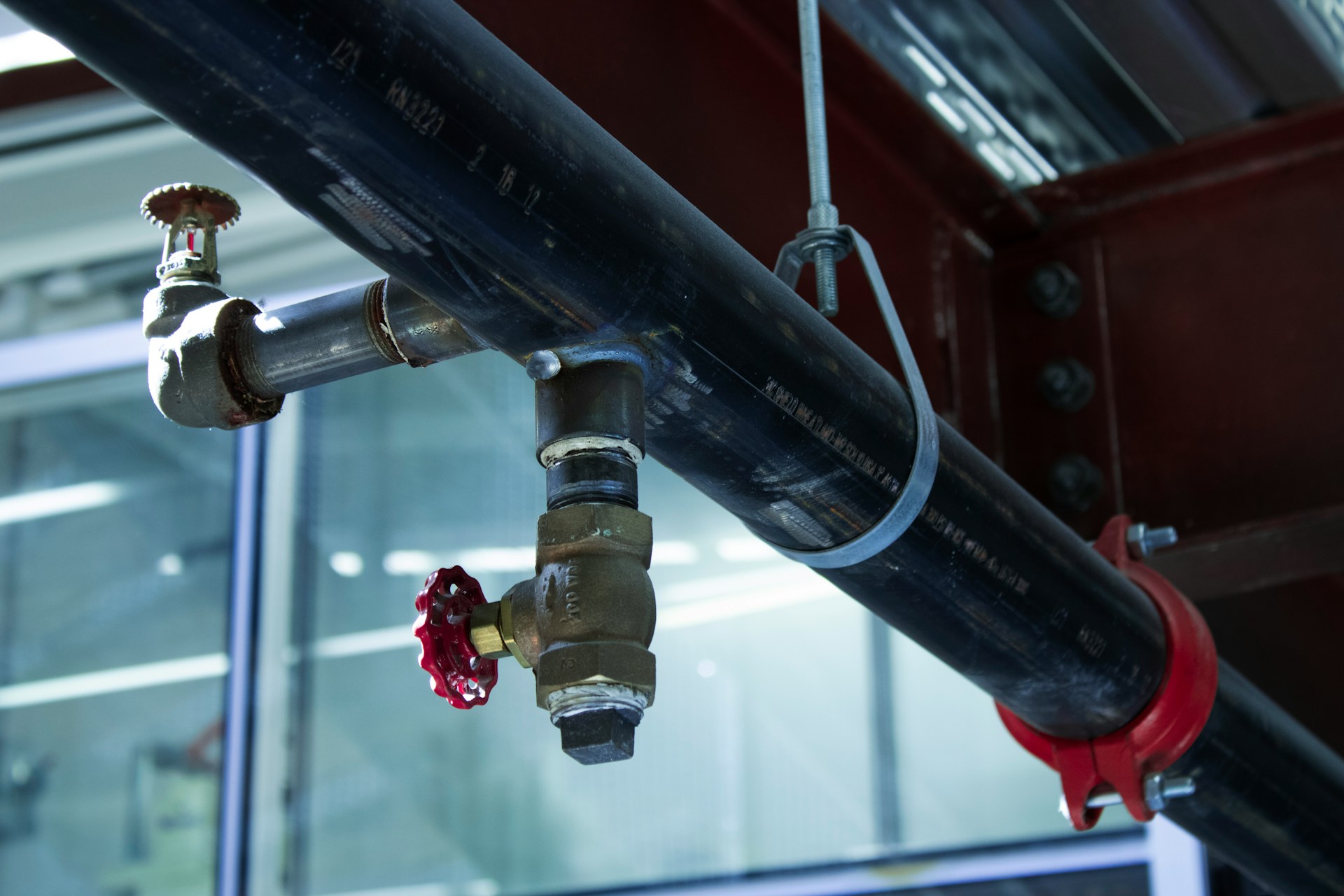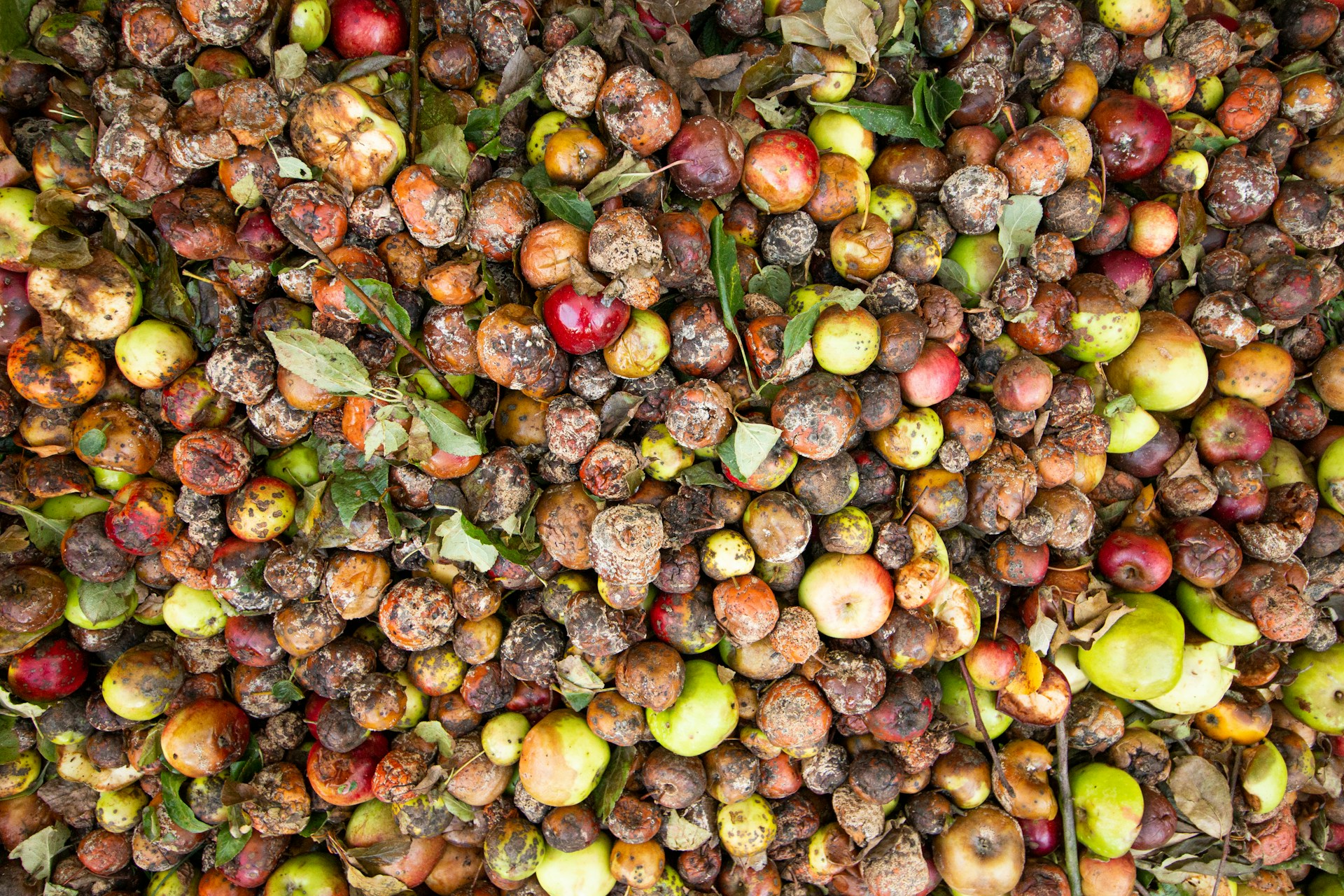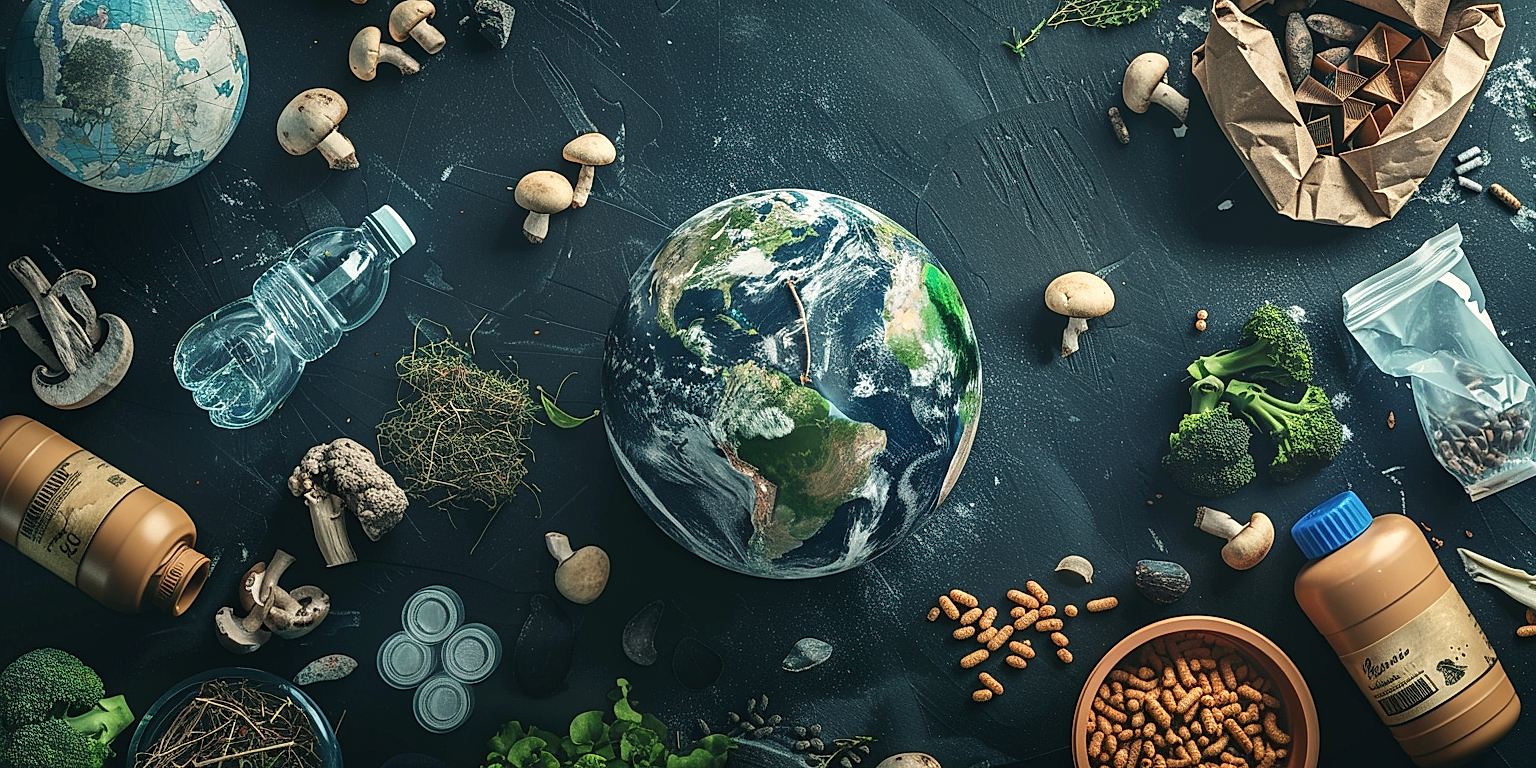In recent years, effective waste management has gained increasing prominence within the context of sustainable development.
Particularly in the field of food production, there is an urgent need to address the issue of waste generation.
The current blog post seeks to shed light on various methodologies designed to create a zero-waste scenario specifically in produce processing.
Embracing such a philosophy has the potential not just to greatly reduce the environmental impact, but can also offer significant economic advantages.
This will be a comprehensive discussion about the rationale, importance, and practical execution of waste reduction techniques.
Tackling this complex matter requires that we explore various dimensions, from technology innovation to adjustments in business practises and consumer behaviour.
Contents
Approaches To Zero-waste In Produce Processing
1. Utilize all parts of fruits and vegetables
One key aspect of minimizing waste in produce processing involves the comprehensive utilization of all parts of fruits and vegetables.
Produce processing often leaves skins, seeds, and stems behind, but these parts hold significant dietary fiber and nutrients that can be harnessed if used correctly.
This not only reduces the amount of waste generated, but can also enhance nutritional content and potentially save costs.
The challenge, however, is in finding creative and economically viable ways to utilize these parts.
For instance, fruit peels can be processed and used in a variety of ways such as flavorings, natural food colorants, or even as an ingredient in health-promoting products.
Vegetable stalks and leaves, instead of going to waste, can be transformed into rich, nutritious broths.
Many produce processors are now investing in R&D to explore innovative methods of using all parts of the fruits and vegetables they handle.
This involves looking at ancient cuisines for inspiration, where waste was minimized by using every part of the produce, as well as leveraging modern culinary science.
Crucially, this total utilization strategy requires conscious planning and execution from the early stages of procurement to the final products.
Produce selection, for instance, needs to be done with an eye out for fruits and vegetables that are suitable for total utilization.
Processing equipment and facilities also need to be equipped with the necessary technology to handle and process every part of the fruit and vegetable.
Storage and handling practices also need to be adapted to ensure the viability and freshness of all parts.
Additionally, employees at all levels need to be trained in waste-minimizing practices and hold the responsibility of adhering to them.
Marketing strategies also have to be in place to educate consumers about the benefits and added value associated with these types of products.
Finally, implementing a zero-waste policy in fruit and vegetable processing also has broader implications for the sustainability of the food industry at large.
As such, embracing the comprehensive use of all parts of fruits and vegetables is a crucial step towards achieving the goal of zero-waste in produce processing.
2. Opt for biodegradable or reusable packaging
A key approach to achieving zero-waste in produce processing is the adoption of biodegradable or reusable packaging.
This involves making a conscious decision to stray away from non-degradable plastic packaging that typically ends up in landfills, oceans, or incinerators.
Switching to biodegradable options provides an excellent pathway to minimize and potentially eliminate waste production in the processing of fruits and vegetables.
Biodegradable packaging, such as those made from cassava starch or other plant-based materials, decompose naturally and safely into the environment.
Furthermore, these materials, once degraded, can contribute to the nourishment of the soil, contributing to a sustainable condition for farming and agriculture.
Given the high turnover rate of fruits and vegetables, single-use non-biodegradable plastic containers contribute substantially to global waste.
To rectify this, reusable packaging can be employed in the storage, transportation, and sale of fruits and vegetables.
Reusable packaging such as plastic crates, canvas bags, and glass jars offer more durability and longer useful life span than the single-use counterparts.
In addition to reducing waste, these options also promote resource efficiency as the need for continuous production and disposal of single-use packaging is curtailed.
However, it’s important to note that the implementation of reusable packaging requires a conscious effort from consumers to ensure the return of these packaging materials for reuse.
An effective approach to this is by implementing a deposit-refund system, which provides an incentive for consumers to return the packaging for reuse.
Another advantage of biodegradable or reusable packaging is the positive impact on the brand image of the produce processor.
Customers are becoming increasingly aware and concerned about the environmental footprints of the products they consume.
Therefore, a bold decision to adopt biodegradable or reusable packaging can be leveraged as a strong marketing tool for produce processors.
Embracing biodegradable or reusable packaging not only contributes to the stark reduction of waste, but it also sets a path to a sustainable and greener future in the sector of produce processing.
3. Implement waste-to-energy conversion systems
In our ambitious journey towards zero-waste, a pivotal role is played by the effective implementation of waste-to-energy conversion systems in the produce processing industry.
These systems offer a sustainable solution to the dual challenge of waste management and energy production.
Waste-to-energy conversion is not just about dealing with waste. It’s about turning a problem into an opportunity.
It converts the residual waste that cannot be reused or recycled into heat, electricity, or fuel through a variety of processes.
This ensures that waste materials are not just discarded, but put to productive use, fostering a true circular economy.
Furthermore, the energy generated as a byproduct can be used to power the operations of the processing units, making them self-sustaining to some extent.
This approach aligns with the broader environmental sustainability goals and contributes to reducing greenhouse gas emissions.
Various technologies are available for waste-to-energy conversion, each with a different scale of operation and output.
Some systems can handle high organic content, making them ideal for produce processing waste like vegetable scraps, fruit peelings, and pulps.
These technologies can be implemented at or near the site of waste generation, reducing the need for transportation and landfilling space.
However, the successful adoption requires careful planning, investment, and a strong commitment to the zero-waste vision.
Selection of suitable technology, designing and operating the system efficiently, and managing the byproducts responsibly, all demand a comprehensive understanding of this complex process.
Despite the challenges, its implementation holds great potential for the precious conservation of resources while substantially contributing to energy security and climate mitigation.
With advancing technology and an increasing understanding of the system’s economic viability, waste-to-energy conversion facilities are gaining popularity worldwide.
Moreover, it also resonates with the trend of businesses taking on the responsibility of creating a sustainable future and advocating for ‘green’ operations.
In the broader sense, the transformation from a linear ‘take-make-waste’ approach to a more circular ‘take-make-reuse’ system significantly pushes forward the zero-waste agenda.
Therefore, the implementation of waste-to-energy conversion systems proves to be a strategic solution in achieving zero-waste in produce processing.
4. Recycle Water Used During Processing
Recycling water used during processing of fruits and vegetables is often overlooked in the quest to achieve zero-waste, yet it remains an integral part of waste management.
In the produce industry, substantial amounts of water are continuously used in various stages of processing, from washing and peeling to blanching.
Most of this water, if not all, goes straight down the drain, contributing to increased water waste.
By incorporating water recycling techniques into their operations, companies can significantly reduce water waste, thereby moving closer to a zero-waste model.
Not only does this water recycling promote environmental sustainability, but it also cuts down the overhead cost of fleetingly used water in production.
One way to achieve this is through a process known as greywater recycling.
Greywater recycling involves treating and reusing water that has been used in production stages like washing and cooling, but is still relatively clean.
Innovation in technology has enabled the use of aquaponics and hydroponics systems that reduce water usage by re-circulating water, thereby aiding recycling efforts.
Systems like reverse osmosis can be employed to further purify the water, making it suitable for reuse in the processing of produce.
Many businesses have begun experimenting with closed-loop systems where water waste can be reduced by as much as 90%.
The reallocation of wastewater to agricultural fields is another effective strategy for water recycling.
Besides reducing water consumption, these efforts can lead to a decrease in the pollution levels as it reduces the amount of wastewater released into water bodies.
However, it’s important to note that measures for recycling water should be compliant with safety and health regulations of the local area.
Ultimately, embracing such water recycling methods contributes to achieving the goal of zero waste in produce processing.
5. Engage in composting of organic waste
Produce processing industries can drastically reduce their waste levels by engaging in composting of organic waste.
Composting is a process that converts organic materials, like fruit and vegetable residuals, into a soil conditioner.
It’s a simple, yet effective method to manage organic waste, turning it into a valuable resource that can enrich the soil.
Composting is a natural process which requires minimal equipment and it’s something that most fruit and vegetable processors can do in site.
The compost produced by this method can be used to fertilize crops, thus helping the agriculture side of the food industry as well.
This practice not only reduces the amount of waste going to landfill but it also significantly contributes to the conservation of our environment.
Composting is accessible to all, regardless of the scale of the industry: from smallorganic farms, to big commercial processors.
The resulting compost is a cost-effective alternative to synthetic fertilizers, which often have environmental issues tied to their overuse.
The microbiological activity during the composting process also has the capacity to kill harmful pathogens found in waste, making it a safe resource.
There are different composting systems to choose from, including windrow composting and in-vessel composting, depending on the capacity and needs of the processing operation.
By engaging in composting, produce processing operations can help to close the loop of the food system, transforming waste into a resource.
It’s important to understand that composting is not a waste treatment technology, but rather a waste prevention strategy.
It also ties in with the wider goals of a zero waste strategy, for instance, reducing greenhouse gas emissions or promoting sustainable farming practices.
Indeed, companies that adopt composting practices are often viewed positively by consumers, enhancing their brand image and reputation.
As we can see, composting of organic waste is not only good for the environment but it’s also good for the business.
The Bottom Line
All of these environmentally-friendly tactics underscore the importance of putting sustainable practices at the forefront of our consumption and production patterns.
Embracing the full use of fruits and vegetables, opting for biodegradable or reusable packaging, putting waste to energy conversion systems in place, recycling water in the processing phase, and composting organic waste are all imperative steps towards achieving environmentally responsible consumption and waste management.
Each one offers its own unique advantages and collectively, they contribute significantly to a more sustainable environment.
We must therefore, continue to persevere in our efforts to intensify these practices in our daily lives and across industries.
Through concerted effort, we can make significant strides towards a more sustainable future.




